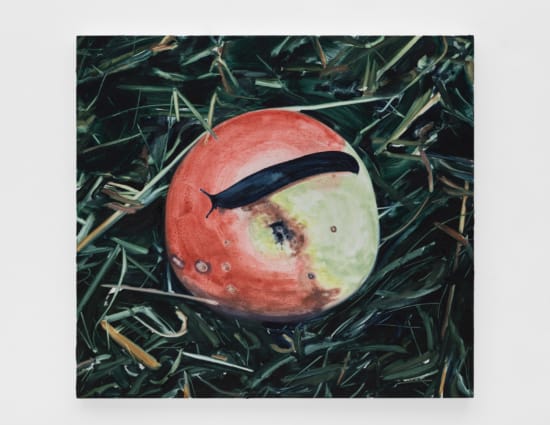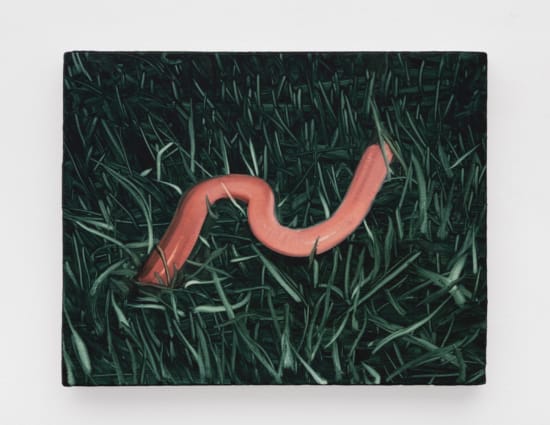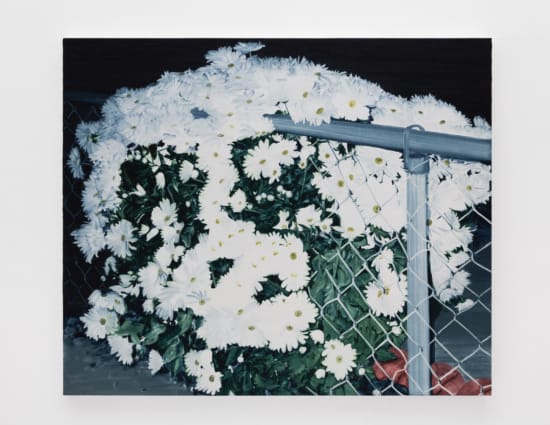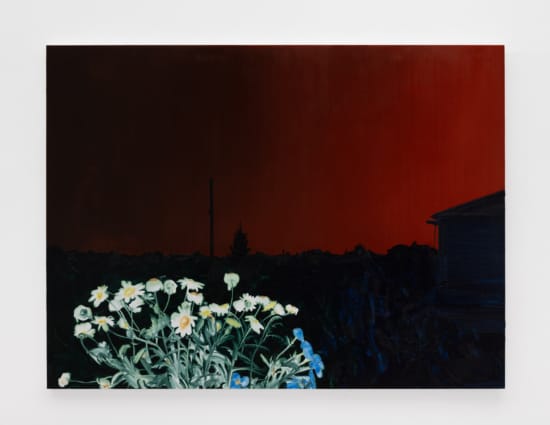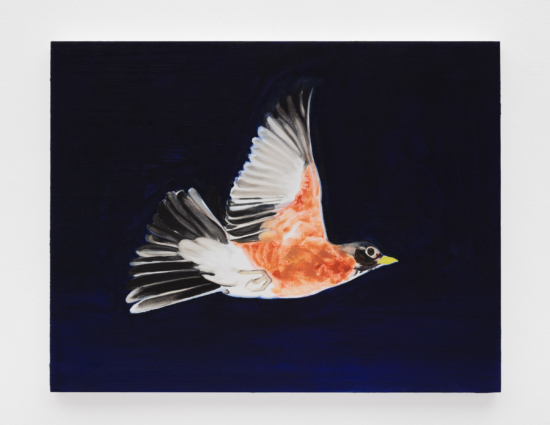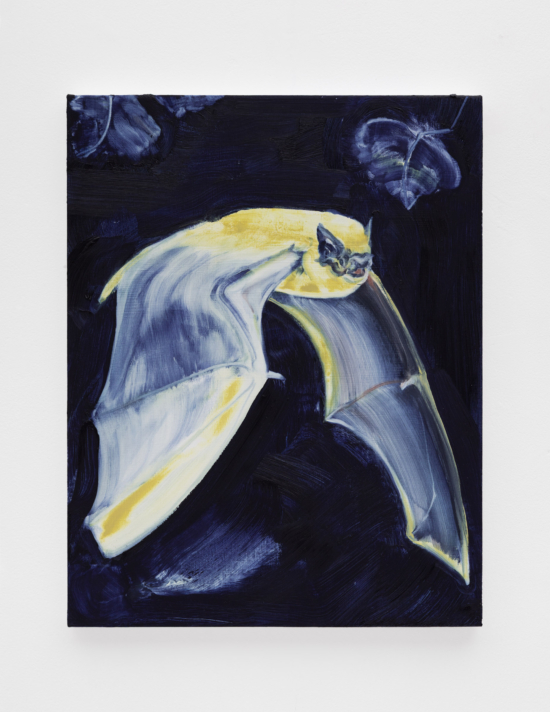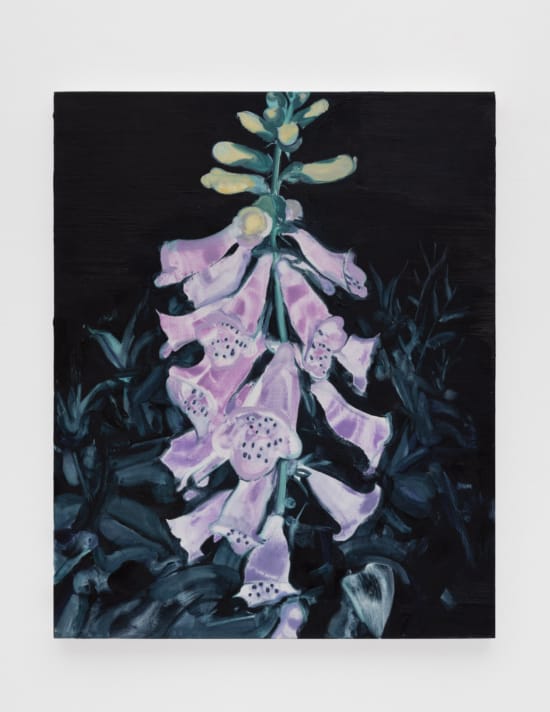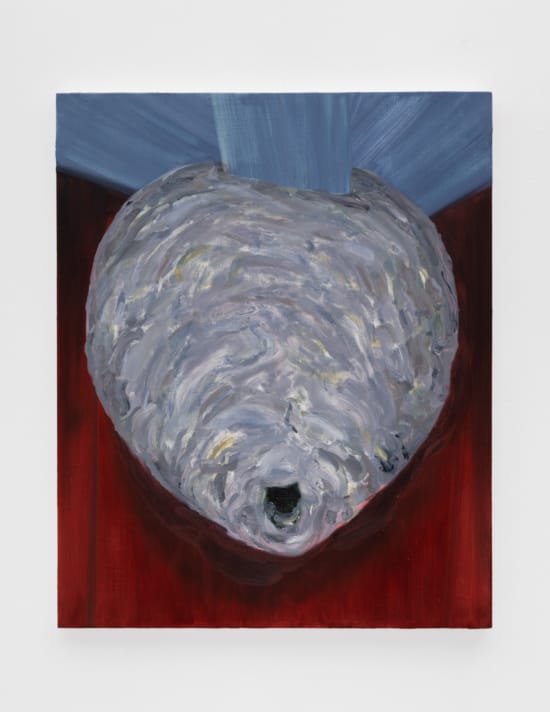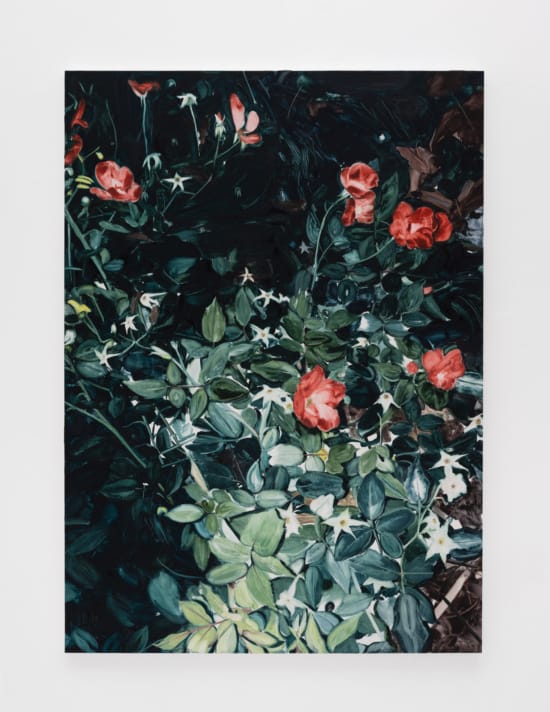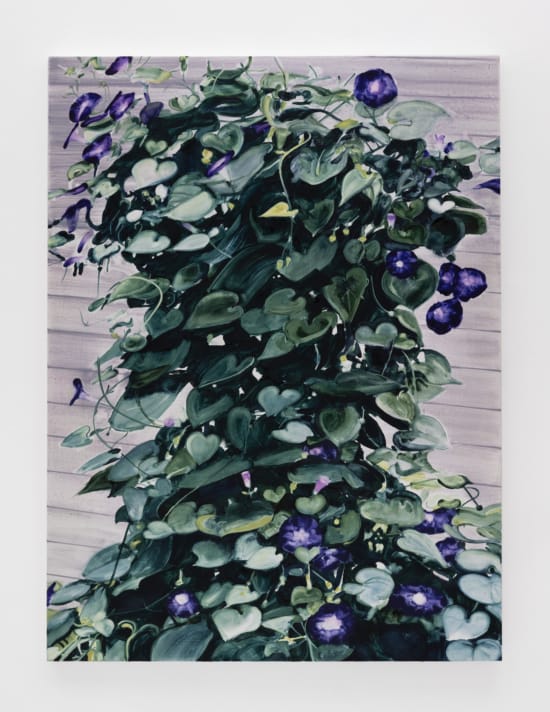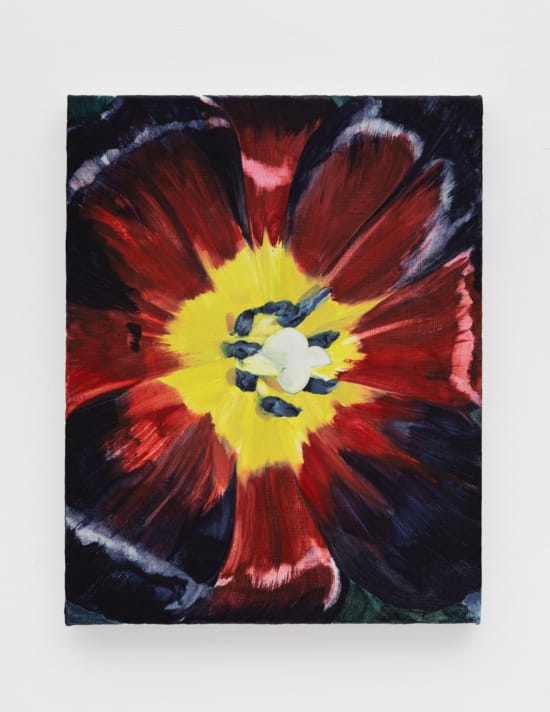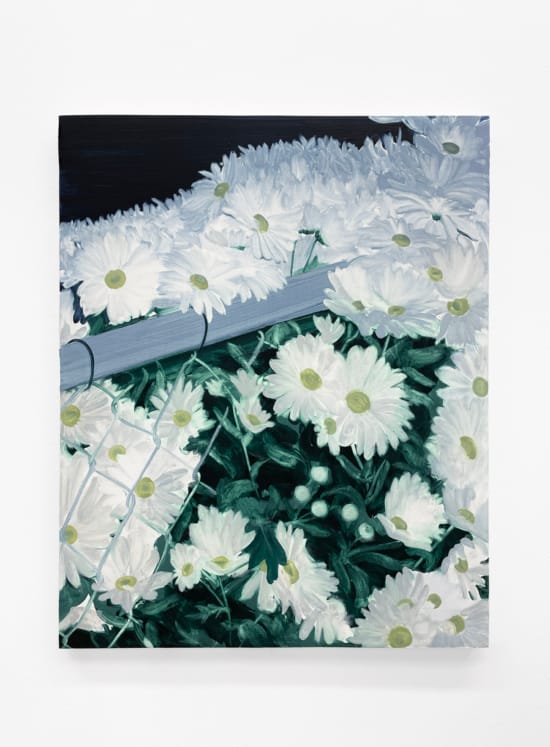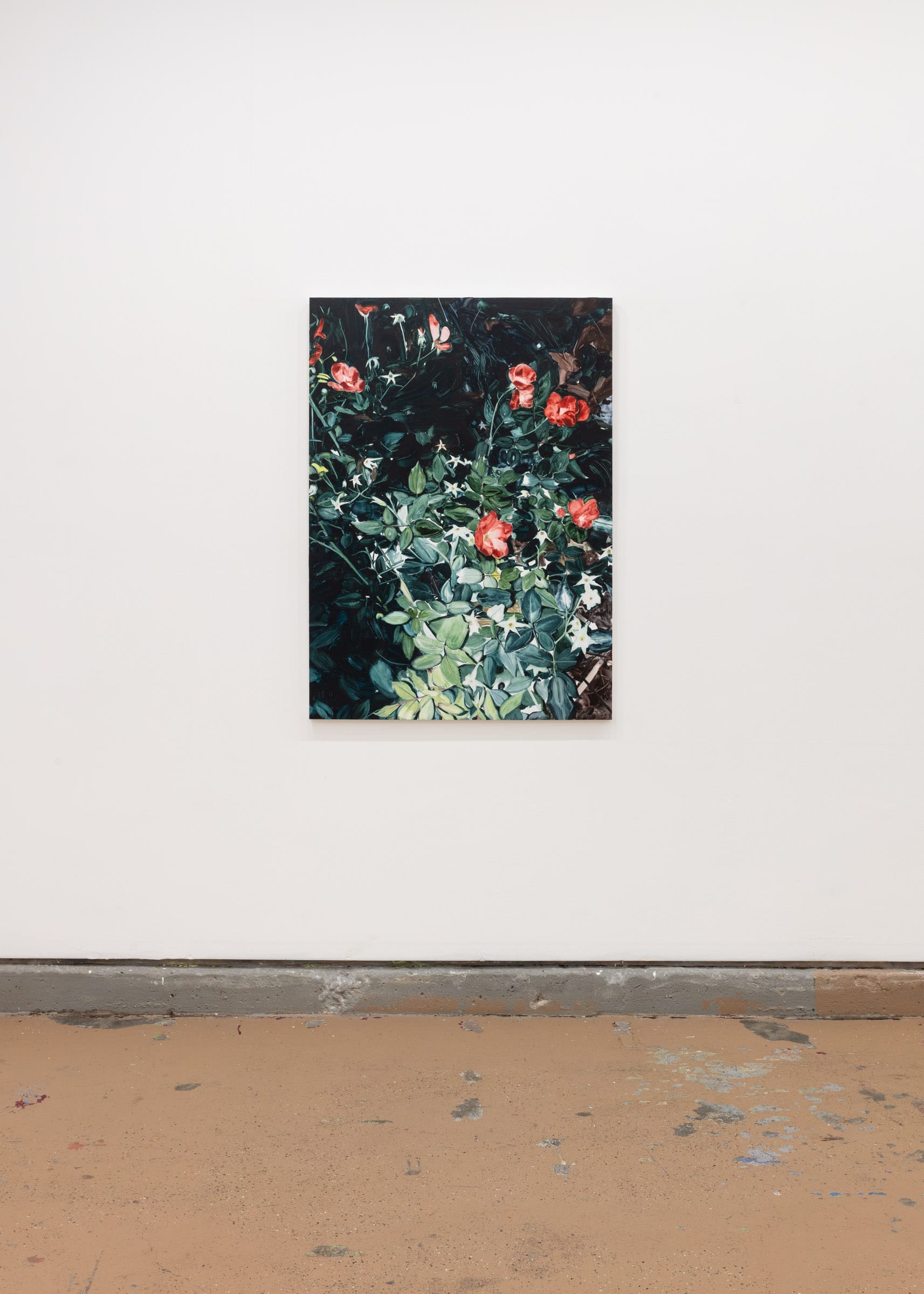
LAURA FINDLAY
The Darkest Hour
EXHIBITION
OPENING RECEPTION
Artist in attendance
The Exhibition
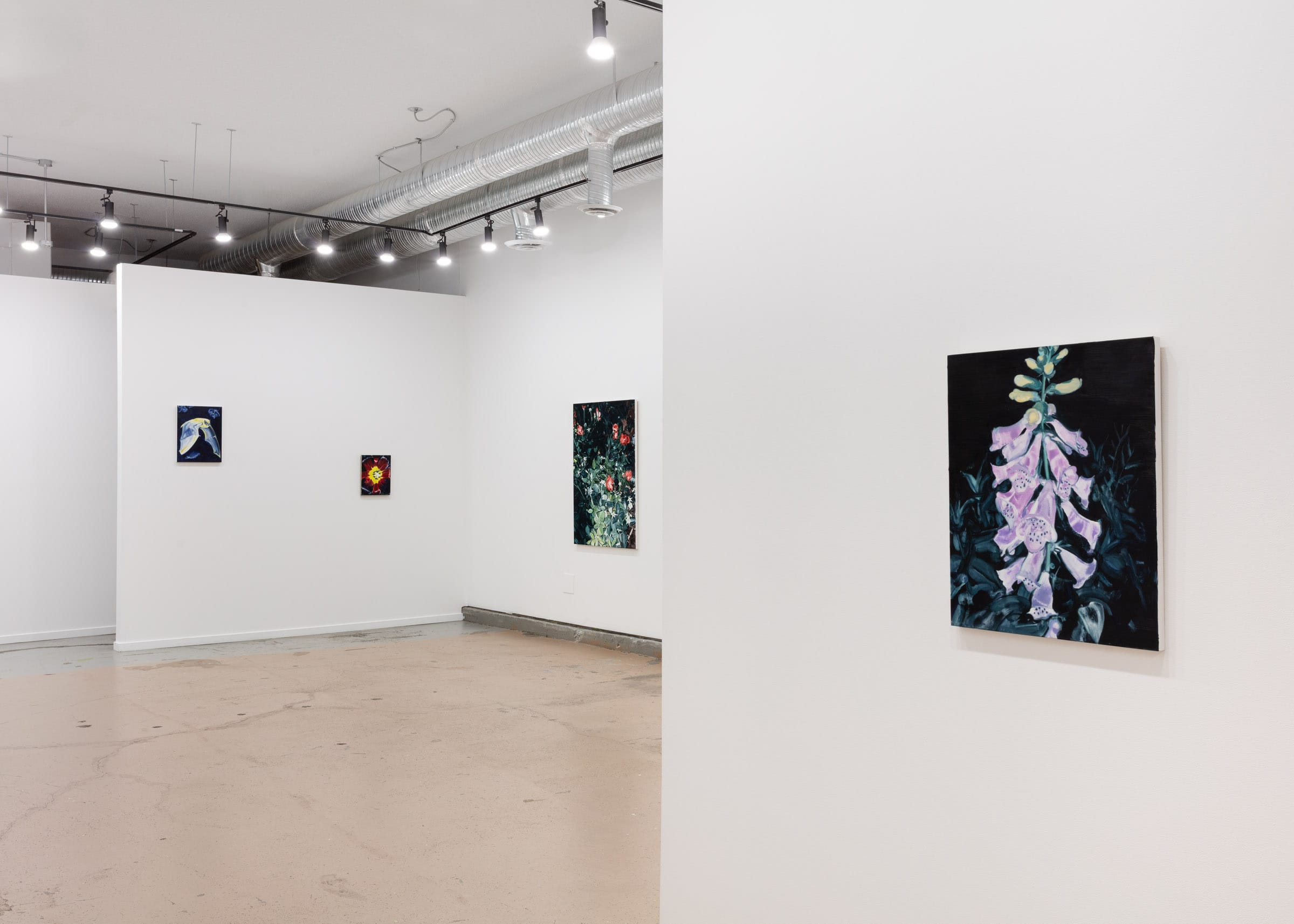
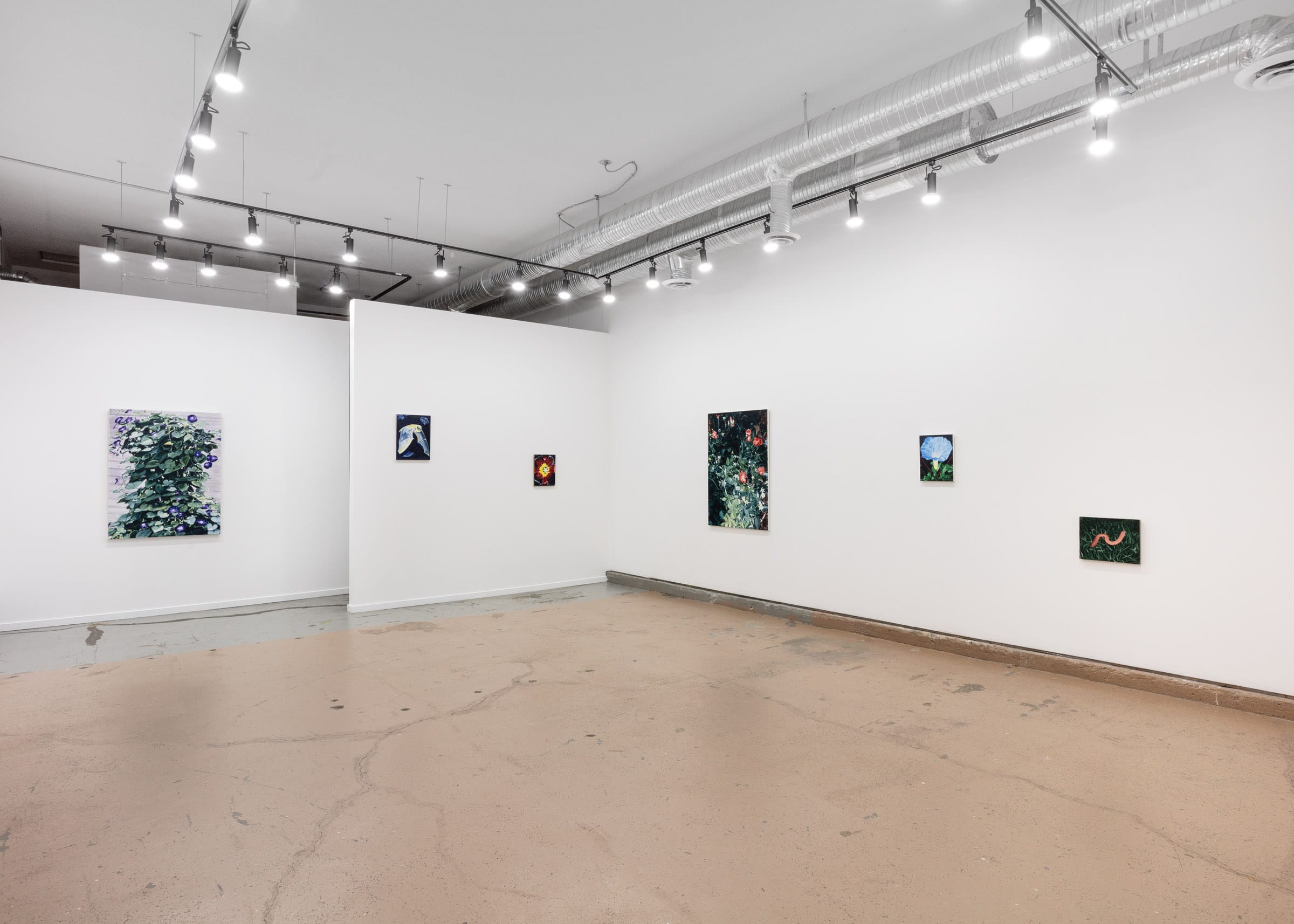
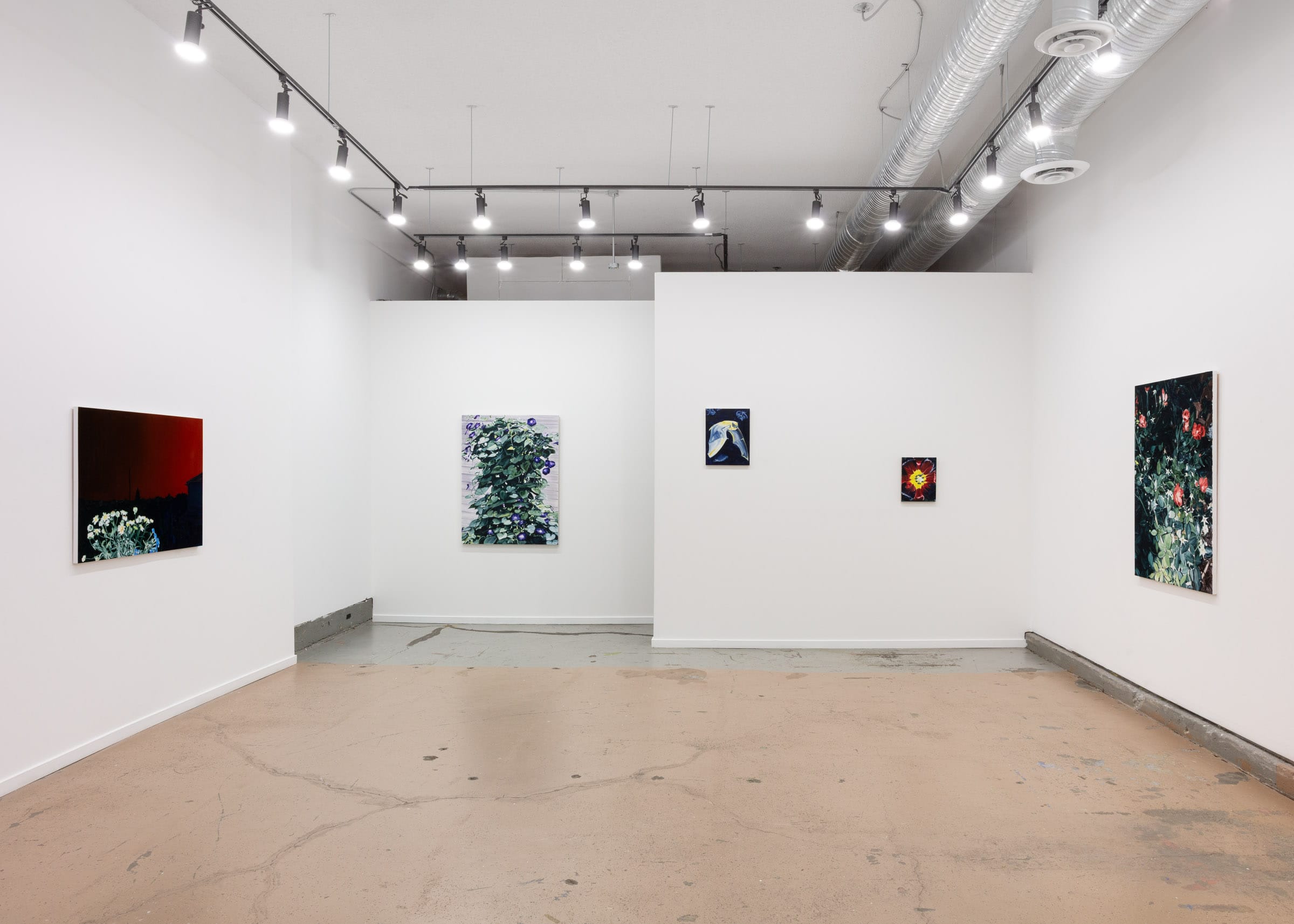
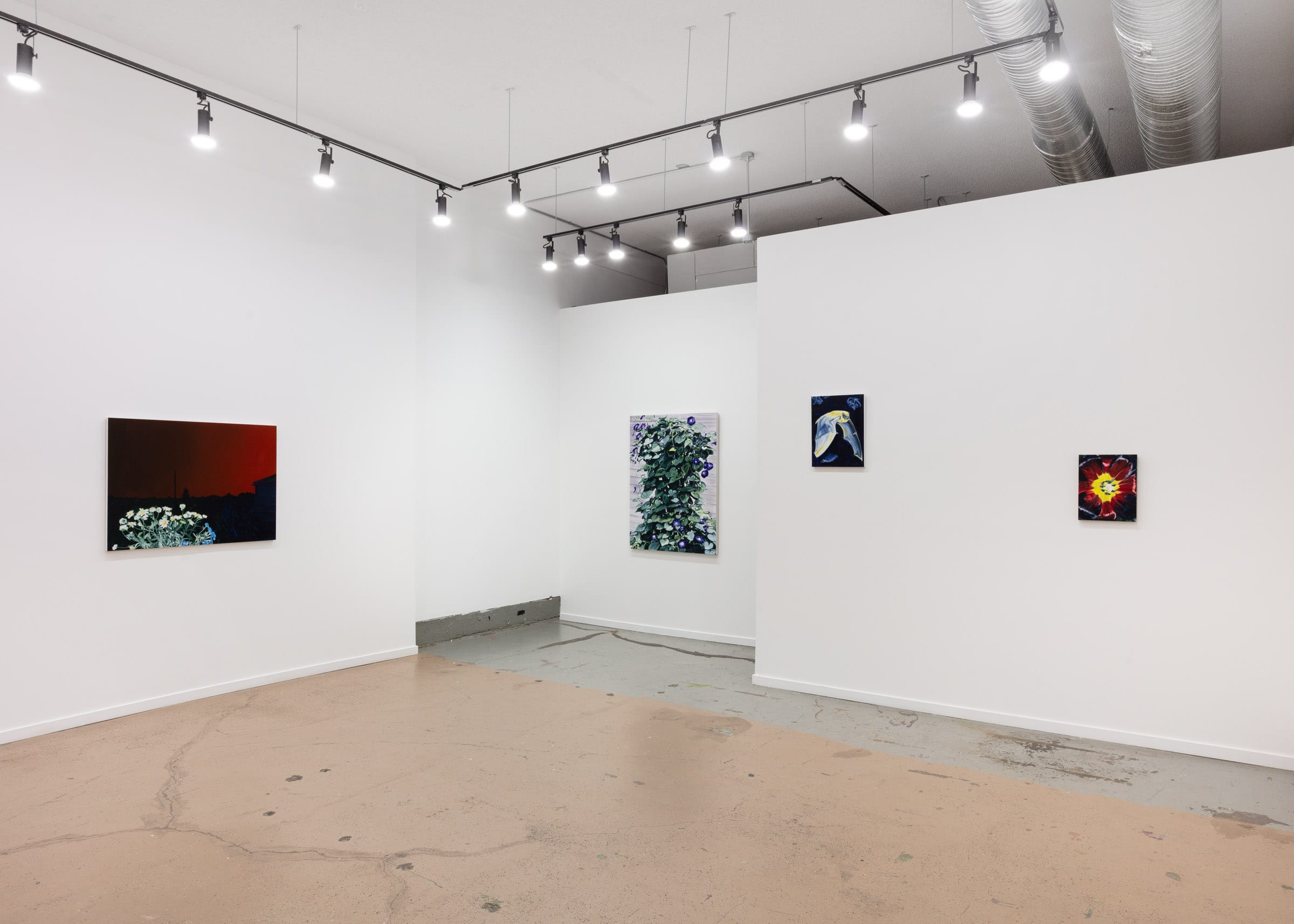
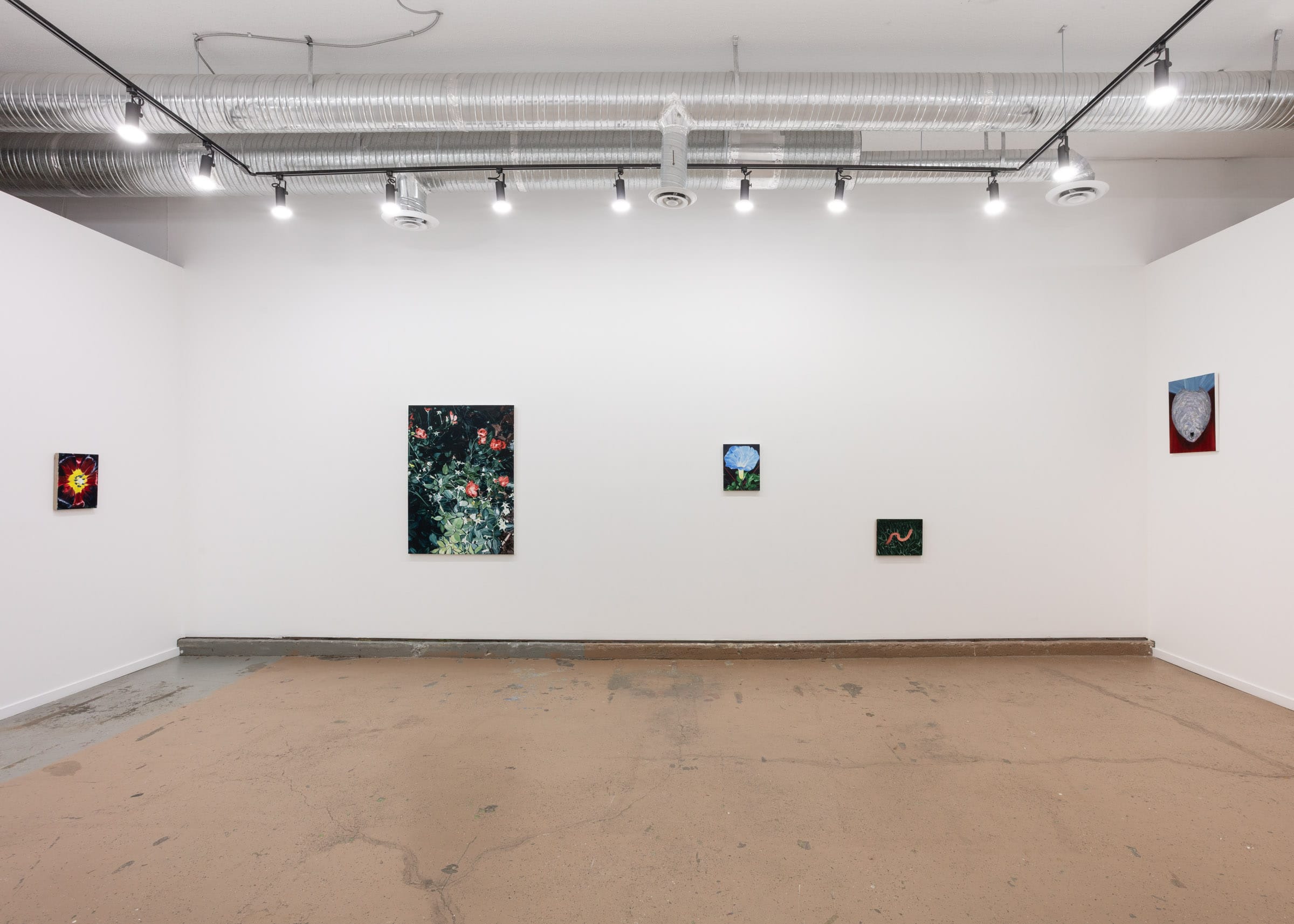
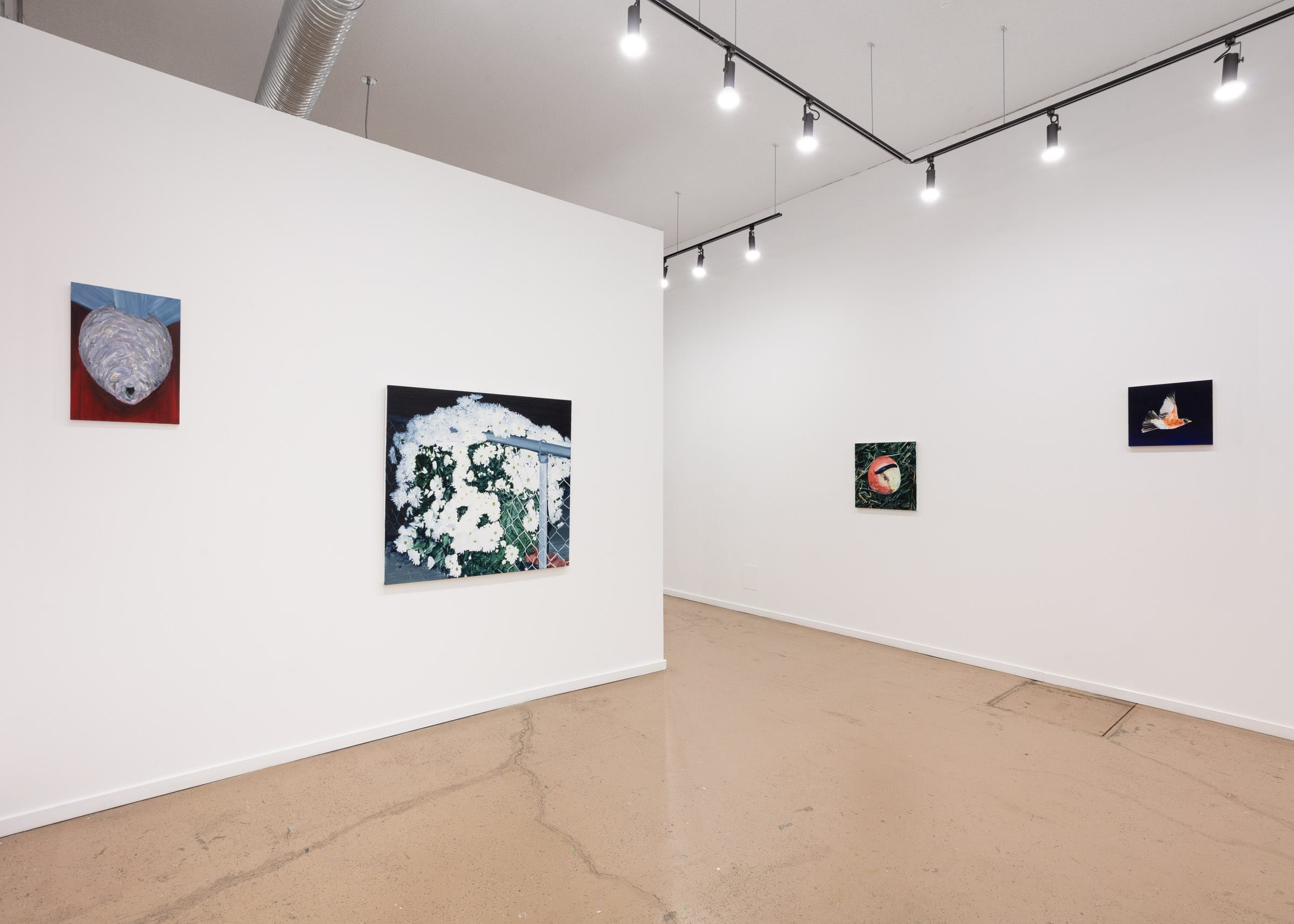
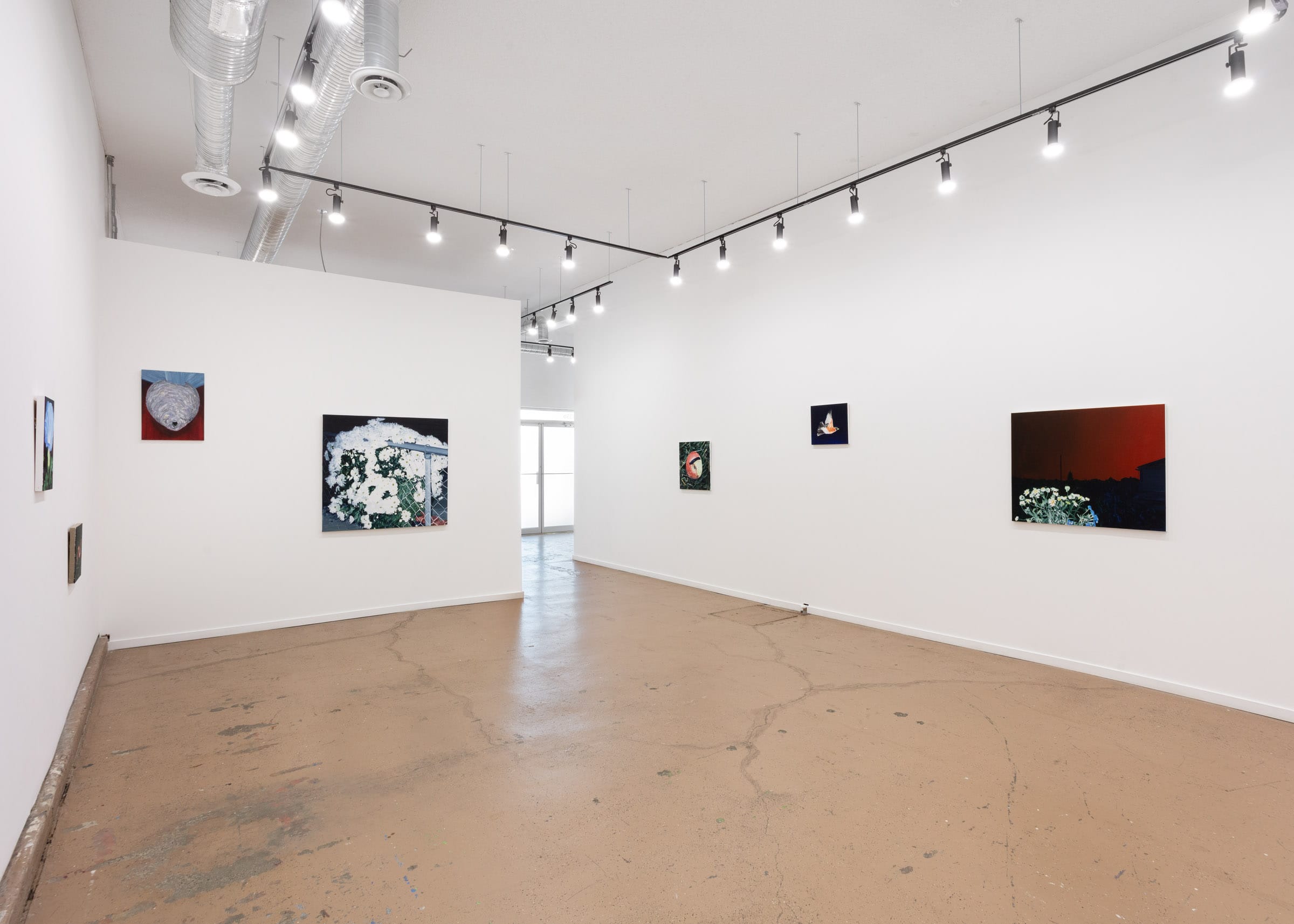
The Statement
Exhibition text by Nicole Dufoe, Writer
First, I see the photographic negative. I admit this, on my part, to be an error—the colours in these paintings are not reversed but flooded by the flash—yet the ethereal glow of the night garden recalls a darkroom alchemy. Laura Findlay is also a professional photographer who began honing her skills as a teenager with a series of jobs in photo labs; this entrenched sensibility shows up in her play of light and dark as well as in the images themselves, which are scavenged, manipulated, and reborn on the studio floor.
There is also the sculptural negative: the relief, or cast. Many artists build their paintings from the ground up. These works come to be through careful removal, as Findlay wipes away layers of pigment and glaze with brush, cloth, and even finger. The pink bruise of her touch transforms the blank panel beneath with stains of petal and feather.
I see too, in Findlay’s paintings, a tenderness. Fecund but fleeting subjects appear in a palette that hints of a rising sun. The promise of a bursting blossom; a fat worm on cut wet grass; red fruit ravaged by hungry bugs; wing, plume, and incandescent rot. I feel here the ephemerality that both painters and poets have long ached to capture, that other negative—the “negative capability”—which Keats experiences attempting to cage a nightingale with rhyme and metre. The felt truth of his project has outlived its poetic cliché: meaning found only in beauty, and beauty only in transient uncertainty.[i] The life cycle may be long, but oil paintings will also have their day in the mud; perhaps this is itself a wonderful reason, these pieces suggest, for us to continue making them.
Artists may be alchemists, but they are not magicians. After visiting the Chauvet Cave, John Berger interprets the prehistoric markings of animals in motion (some of the oldest yet discovered) as acts of excavation. “The drama of these first painted creatures … is always behind, in the rock. From where they came. As we did, too…”[ii] The flickers of life Findlay’s paintings pursue are similarly unearthed more than they are created.
*
And the earth continues sprouting. In “Some Thoughts on the Common Toad” (1946) George Orwell describes the inevitable return of a London Spring in the shadow of the second world war.
There is something radical, Orwell suggests, in submitting to the joy of nature, as its stubborn, gorgeous, fertile mess comes “seeping in everywhere” regardless of crumbling concrete or dour, didactic headlines.[iii] A pause for the robin or foxglove is anything but political acquiescence. In Elaine Scarry’s assessment, the beautiful should not distract from the concerns of the world but rather intensify our engagement. Findlay’s thumb presses into the painting, yes, but the aesthetic pleasure she creates pushes back upon us viewers “to repair existing injuries.”[iv] What we do with that pressure, of course, becomes our own responsibility.
Not that the toad or the daffodil needs to be seen to wield power. In this project, Findlay admits traces of the domesticated human: mown lawns, vinyl siding. But an explosion of daisies soon makes a mockery of a chain link fence. The pedigreed roses share real estate with feral weeds. I am reminded again of Orwell’s essay, and the urban bird who does not pay a “halfpenny of rent.” Etymologically, a radical is also a root. The garden grows despite our careful planting, not only because of it.
Findlay’s paintings make room for what emerges each year from the frozen dirt. They offer space for the splendour which, every morning, comes in the wake of the darkest hour.
[i] John Keats, “Ode to a Nightingale;” “Ode on a Grecian Urn,” 1819.
[ii] John Berger and Tom Overton, “The Chauvet Cave Painters (c. 30,000 years BC),” in Portraits: John Berger on Artists (London: Verso, 2015), 6.
[iii] George Orwell, “Some Thoughts on the Common Toad,” Tribune, April 12, 1946.
[iv] Elaine Scarry, On Beauty and Being Just (Princeton, NJ: Princeton University Press, 2019), 57.
The Work
- LAURA FINDLAY
- LAURA FINDLAY
- LAURA FINDLAY
- LAURA FINDLAY
- LAURA FINDLAY
- LAURA FINDLAY
- LAURA FINDLAY
- LAURA FINDLAY
- LAURA FINDLAY
- LAURA FINDLAY
- LAURA FINDLAY
- LAURA FINDLAY
- LAURA FINDLAY
The Artist
LAURA FINDLAY
B.1984
Working primarily through gestural representational painting, Laura Findlay is interested in the tension that results from encounters between the natural and the built world. Her recent projects explore gardens as a transitory site to examine the interplay in notions of nature, the environment, and technology. Findlay uses a subtractive painting process to generate an image through removing material and explores how these subjects and actions can be intertwined in paintings that join the process and the idea on the surface of the work.
Laura Findlay (b. Montreal, Canada) received her MFA from the University of Guelph and a BFA from Concordia University. Findlay’s artistic practice encompasses painting and installation exploring confrontations between the natural and built world through additive and reductive processes. Her recent exhibitions include Conditions, Toronto; McBride Contemporain, Montreal; The Plumb, Toronto; Andrew Rafacz Gallery, Chicago, Art Gallery of Grande Prairie, AB, Norberg Hall, Calgary; Open Studio, Toronto; Galerie Division, Montreal; and Arsenal Contemporary, Toronto. She has upcoming solo exhibitions at Norberg Hall, Calgary and the Glenhyrst Art Gallery, Brantford. She has been artist in residence at the Annandale Artist Residency in Prince Edward Island, the Brucebo Foundation in Gotland, Sweden, the Banff Centre, and the Vermont Studio Center. Findlay lives and works in Toronto, Canada
